How to transport a bike on a train?

Many people like a bicycle - it is, indeed, a useful and convenient form of transport. However, it is not so easy to move it by rail. You need to know a number of subtleties, as well as take into account possible problems.
Features and rules of transportation in different types of wagons
Almost every owner of an "iron horse" needs to transport a bicycle on a train from time to time. Not everyone has a car, and it is not always convenient to drive on it, or even, in general, you can come to the right place. And Russian Railways has its own rules, and they differ from those procedures that operate in the metro or surface public transport.
Transportation of an unassembled bicycle on a commuter train is only possible in the vestibule.
In every vestibule they put 1 bike maximum, and charge for them payment as for a full travel.

If you disassemble the bike and put it in a case, you can take it for free. However, the rules of the railways say that only those things that are recognized as oversized cargo can be transported without paying a fee. Russian Railways considers oversized cargo to be such baggage that it can freely sweep through regular aisles and be placed in standard baggage spots. For a single-deck car, the limit values are as follows:
- in height 1.75 m;
- in width 0.5 m;
- at a depth of 0.45 m.
For double-deck carriages, the total sum of all three dimensions must be a maximum of 1.8 m. Obviously, it is quite possible to carry a teenage or small adult bicycle in a compartment of long-distance trains. And not a single conductor or even the head of the train / station can forbid it.If passengers weigh their luggage and have a receipt from the Russian Railways weight service, there should be no obstacles to travel. In case of refusal to carry baggage, passengers can receive the previously paid amount in a claim procedure.
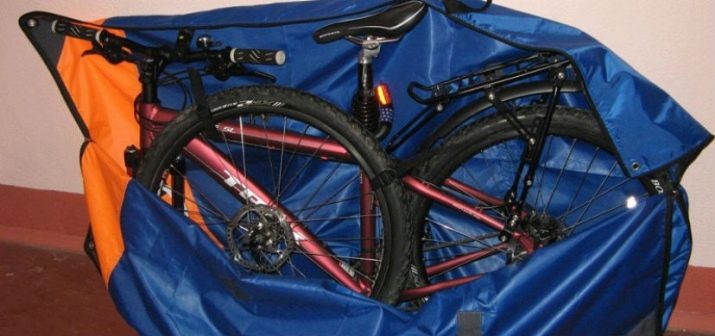
Important: Special rules for the transport of sports equipment and equipment say that bicycles should not cause problems for other passengers and staff of the railways. If this rule is observed, bicycles can be transported in places for carry-on luggage or in places occupied by the passengers themselves. For each bike you will have to pay a fee, as for a baggage piece weighing 10 kg. Russian Railways even provides instructions for packing such things.
The transportation of bicycles on the Lastochka train deserves special attention. Experienced travelers mention that you must immediately look for the ticket office that also sells baggage tickets... To buy them, you must provide a regular passenger ticket or an e-ticket number. You can find out the order number so as not to wait for the cashier (also for a fee) to find out it from the database using the application from the railways.
Important: almost always, the conductors do not let on the train with a bicycle that is not placed in a bag.
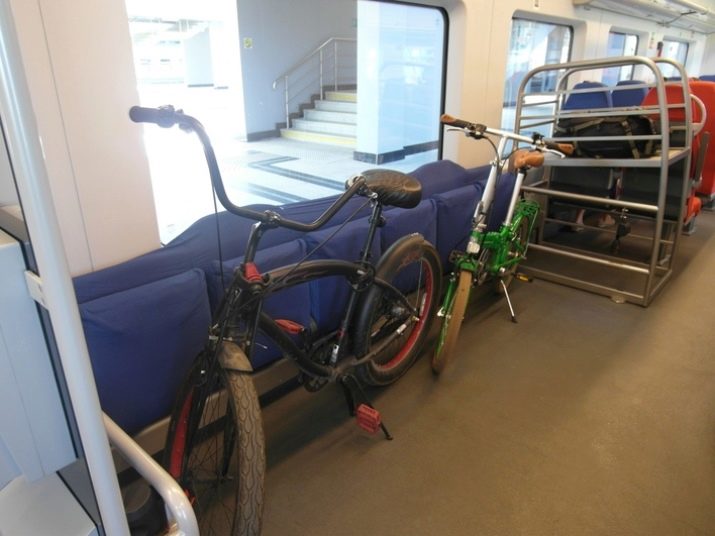
On the train "Sapsan" you can carry up to 36 kg of hand luggage on 1 passenger ticket. The rule “height + width + depth = 1.8 m” also applies to the fastest Russian train. Unassembled bicycles on Sapsans are not allowed in unassembled form. As in other cases, they must be packed and not disturbed by other passengers. It is worth remembering that the safety of their luggage is ensured by the travelers themselves. In the event of its loss or damage, the railway is not responsible.

But sometimes it becomes necessary to travel with a "two-wheeled satellite" in foreign trains. In the vast majority of cases require it to be disassembled and packed. It is assumed that the packaging should be laid out on a standard luggage rack, the size of which is approximately the same as in the Russian Federation. On some trains abroad, special carriages are used; you can fit in them upon making an additional payment. The additional ticket is composted and divided into 2 parts: one is glued to the bike itself, and the other is kept with you until the end of the trip.
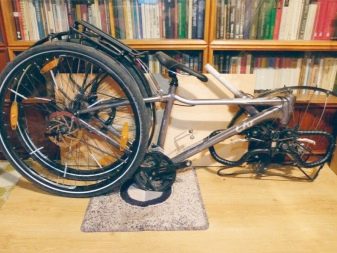

How to pack
The instruction from JSC Russian Railways is as follows:
- lower the saddle;
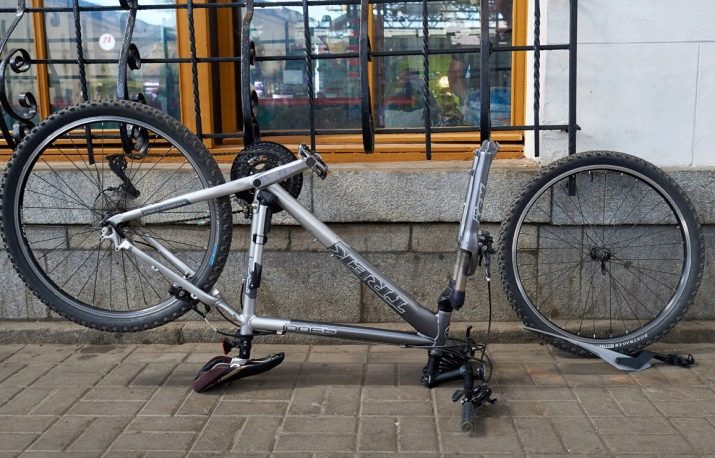
- put the bike on the film intended for packaging;

- pack it completely;
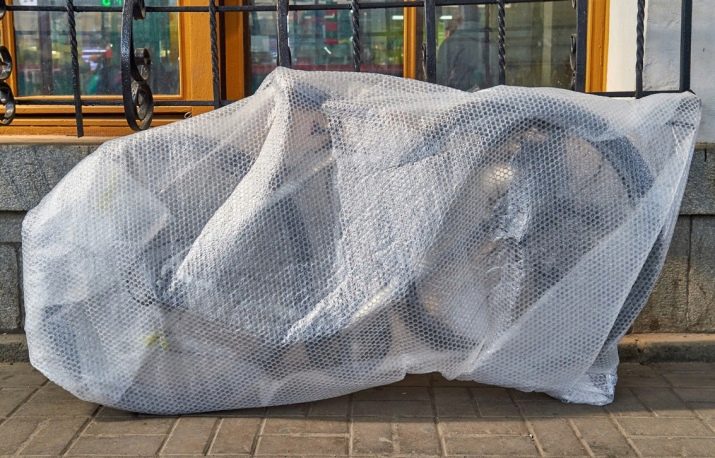
- place the packed vehicle on the third shelf or in the luggage space (preferably with the wheels against the wall).
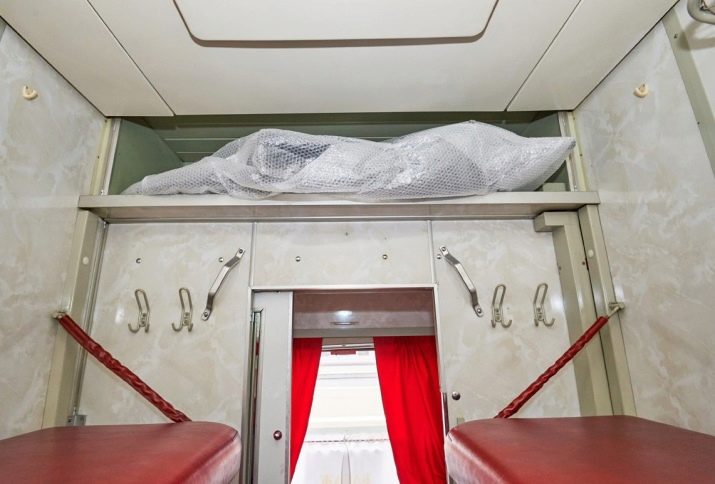
Important: the most convenient and easiest way to travel with packed bicycles is to travel not in a compartment, but in a reserved seat carriage. There, on the 3rd shelf, you can put 3-4 bicycles without any problems.
They are divided into pairs and packed. For greater reliability, their transport is tied with a rope to handles, handrails and other fixed elements.
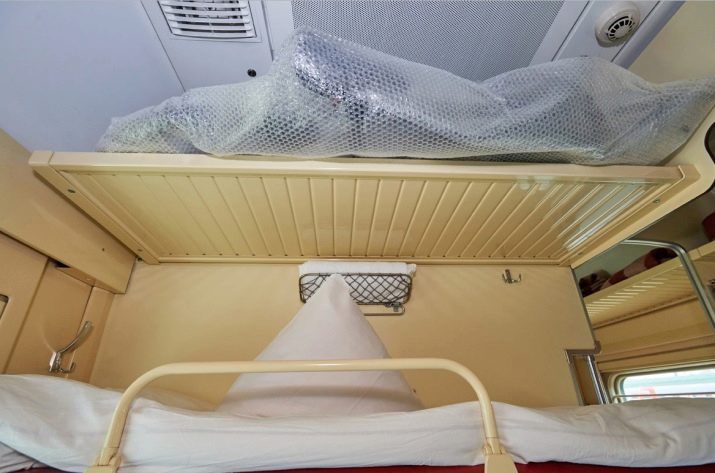
When you put your bike in a bag, you need to:
- dismantle the front wheel (preferably 2 wheels);
- turn the steering wheel;
- unscrew the pedals;
- screw them on the opposite side inside the frame;
- put wheels either in the same or in a separate cover.

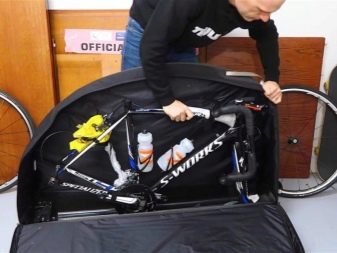
It must be remembered that The parts most susceptible to damage are the crankset, cock and rear dropout. They are lined with pieces of old tourist foam mat. Or use bubble wrap - then there will be less risk of scratches and other damage. The covers can be replaced with large garbage bags with a volume of 120 liters. Two bags are put on the wheels, with two more they cover the frame on both sides.
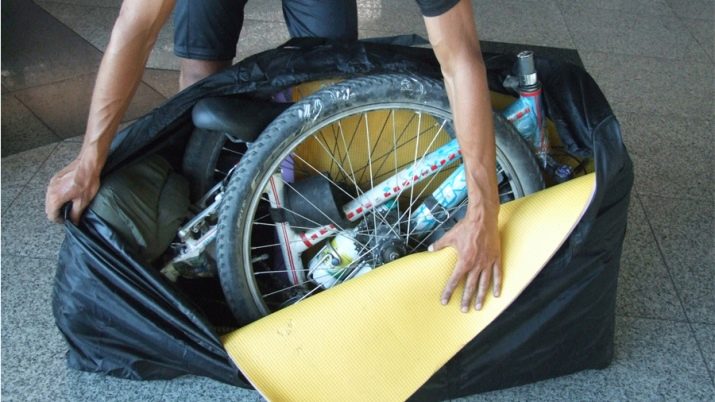
How to disassemble a bike
Summarizing what has already been said, it is easy to see that it is possible to transport a child's bicycle even unassembled. However, very large adult models will not be allowed on the train. Yes, and one "iron horse" is rarely enough - there are almost always some other things. That's why disassembling the bike for transportation is simply convenient. Even if it is not directly required by the rules of the railway.
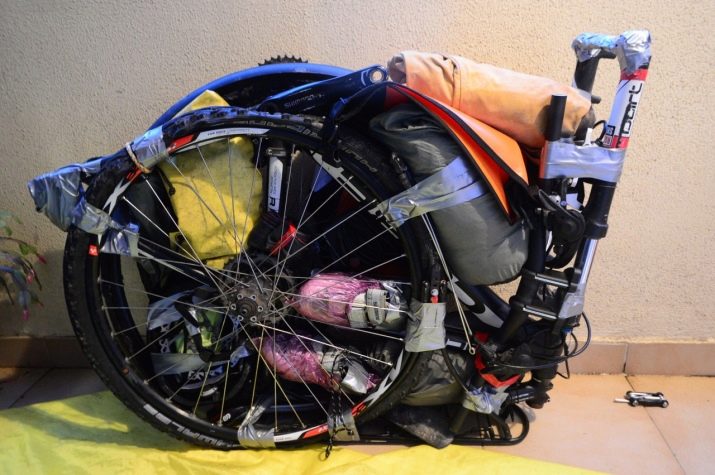
Most often, removing the front wheel is enough. But in some cases this is not enough, and additional details have to be removed. Only then will the bike be completely compact. For work in most cases, typical sets of keys with 6 edges are useful. You have to clean up:
- additional elements;
- pedals;
- special fastening parts;
- bike computers;
- steering horns;
- headlights.
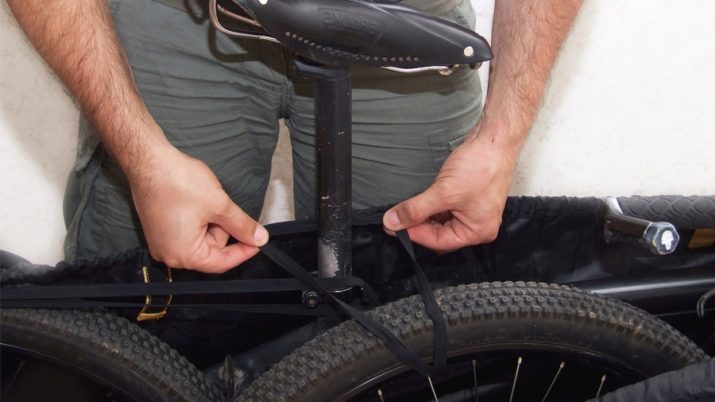
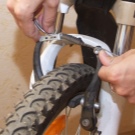


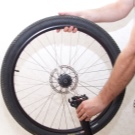
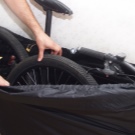
It is advisable to move the seat to the lower position. Then it will be easier to pack the bike in a bag. Removing the front wheel takes place slightly differently depending on which braking systems are supplied. The rim elements are unclenched by squeezing the pads with your hands. Only then will it be possible to pull the arc part out of the recess.
The disc brake can be removed immediately without careful advance preparation. The bicycle is turned upside down with its wheels, taking care that all the component parts do not break or get dirty. It is advisable to put rags or unnecessary newspapers, then the speed switches will remain intact.
Important: If the bike is equipped with hydraulic disc brakes, work quickly - the longer it is in this position, the higher the risk of air entering the hydraulic line.
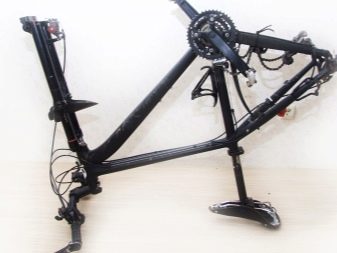

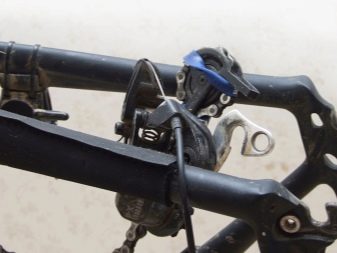

The wheel, supported by a nut, is disconnected with a pair of keys. One is held firmly in place, and the other is driven counterclockwise. Unscrewing to the limit is not necessary, it is enough to loosen the nut so that the wheel can be freely removed. Eccentric fastening involves releasing a lever, which is then twisted counterclockwise. The adjusting nut on the opposite side must be held back.
Inexperienced cyclists often find it difficult to remove the rear wheels. There, the complication is additional equipment. In practice the only difference is the need to loosen the chain. It is translated into the smallest possible stars.... The subsequent steps are the same as for removing the front wheel.
Important: the rear wheel is removed only when there is a direct need for it. They try to remove only the left one from the pedals, and take the right one down. Then there is no need to re-adjust the speeds after the bike is restored.

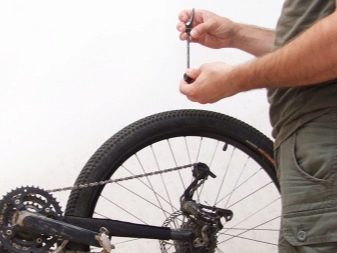


Adjustable or special keys are used to unscrew the pedals. It must be remembered that the thread of the pedals is directed in different directions.
It is advisable to remove the steering horns. The bike computers are removed from the mount and the mount is left in place. The lanterns are removed by removing the ties or unscrewing the screws with hex wrenches. If the wheels are removed, there is no reason to leave the fenders. As for the rest of the accessories, you need to remove everything that can interfere with transportation or may break.
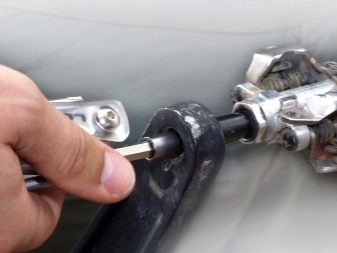
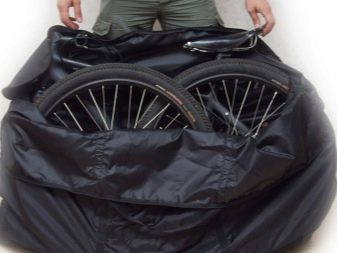
Possible problems
As already mentioned, you need to buy a baggage ticket in advance. If you do this at the station, you will have to find out which ticket office you need to contact. Check that the receipt is correct. That is so that it should indicate the carriage of a bicycle with the note "with you in the carriage." In addition, it should be remembered that in compartment cars the luggage compartment is sometimes too small. Therefore, although now there is no indication in the rules that with a bicycle (even disassembled) one must ride strictly in a reserved seat, this can create inconveniences for other passengers.
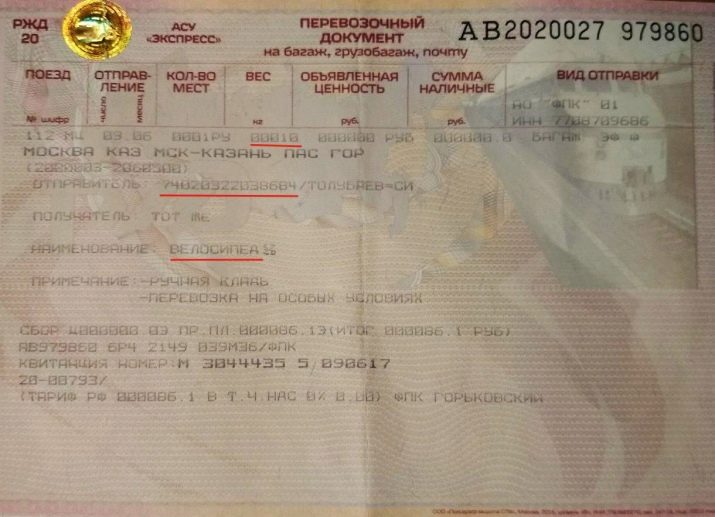
As for the luggage compartment, when transporting a bicycle there, railway workers often rely on limiting the size of luggage. In response, you need to refer to the fact that all these restrictions apply to other things. And to the point directly indicating two-wheeled vehicles among the items allowed for transportation. To reflect all the claims of conductors and other railway workers, it is worth having with you printout from the current version of the railway regulations. In case of persistent claims, you need to appeal to the head of the train; if this does not help, go to the station attendant.
You can watch the video below about two ways to pack a bicycle for transportation on trains.








